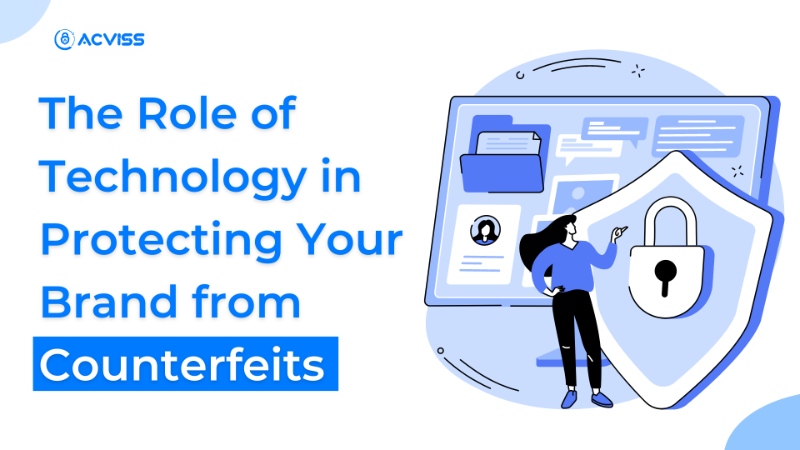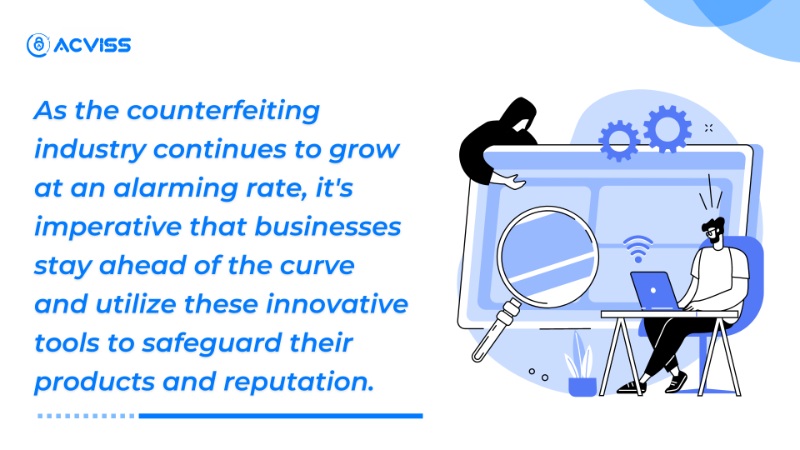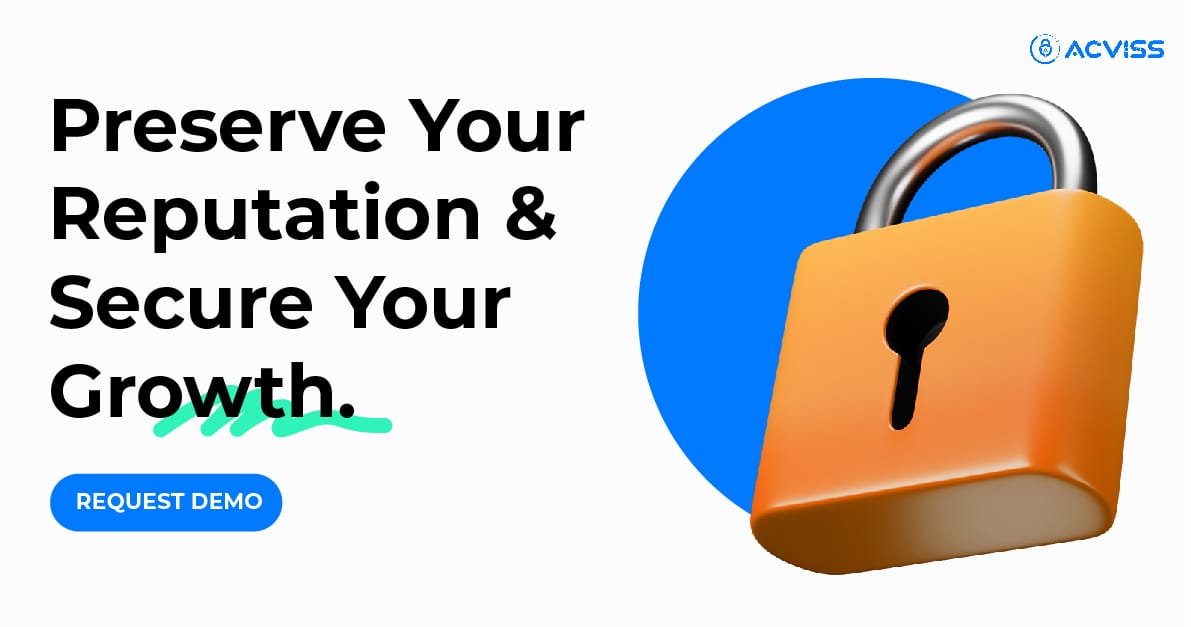Protecting Your Brand in the Digital Age: Emerging Tech Solutions Against Counterfeits

The Growing Problem of Counterfeiting
Have you ever bought a designer handbag or a pair of sneakers online for a fraction of the price, only to find out that it's a fake? It's disappointing, right? Well, imagine how the brand owner feels when they see their product being counterfeited and sold at a fraction of its value.
Counterfeiting is a growing problem and it's not just limited to luxury handbags and watches anymore. Counterfeit products are now affecting almost every industry, from food to electronics to pharmaceuticals. As a brand owner, you must take the necessary steps to protect your products from counterfeiters. Fortunately, technology has made it easier to do so.
Before we dive into the role of technology, let's take a look at the scale of the problem. The global value of counterfeiting has reached $3 trillion in 2022. That's a staggering amount of money that's being lost to counterfeiters. Counterfeiting not only impacts brand reputation but also puts consumers' health and safety at risk.
The Role of Technology in Protecting Your Brand
Now, let's get to how can technology help protect your brand from counterfeits. Here are some ways:
1. Holograms and Watermarks
In the battle against counterfeiting, businesses need to take every possible precaution to protect their products and brand reputation. Holograms and watermarks are two such precautions that have been proven to be highly effective in stopping counterfeiters in their tracks.
Holograms are three-dimensional images that are created using laser technology. These images are difficult to replicate, making them an excellent anti-counterfeiting tool. Holograms are often used on high-value products such as currency, credit cards, and luxury items.
One of the reasons why holograms are so effective is because they are visually striking and easy to recognize. They provide an instant visual cue that the product is genuine and not a counterfeit.
Watermarks, on the other hand, are patterns or designs that are incorporated into the material of a product, such as paper or fabric. They are created by altering the density of the material, which creates a visible difference in the lightness or darkness of the pattern. Watermarks are a highly effective anti-counterfeiting tool because they are difficult to replicate and provide a quick and easy way to authenticate the product. It was found in a study by the Bank of Canada that they were able to prevent counterfeiting by 50%.
2. QR Codes and RFID Tags
QR codes are great for tracking your products and identifying fakes. QR codes are 2-dimensional barcodes that can be scanned using a smartphone or other digital device. They are often used to provide product information, but they can also be used as an anti-counterfeiting tool. QR codes can be printed on a product label, and when scanned, they can provide information to the consumer that can help them authenticate the product. QR codes offer an effective solution as they provide real-time information to the consumer about the product.
RFID tags are small electronic devices that can be attached to a product or its packaging. They use radio waves to communicate with a reader, and they can be used to track and authenticate the product. RFID tags are often used on high-value products, such as luxury items or electronic components.
RFID tags provide real-time information about the product's location and status. They can also be used to track the product throughout its entire lifecycle, from production to distribution to sale.
3. Blockchain Technology
Blockchain technology is the latest addition to the anti-counterfeiting arsenal. It's a secure and decentralized ledger that can be used to track and authenticate products. Each product is assigned a unique identifier that is recorded on the blockchain. This makes it difficult for counterfeiters to create fake products, as they won't be able to replicate the unique identifier. Blockchain technology can prevent counterfeiting by using smart contracts and real-time supply chain tracking. Smart contracts can be used to verify the authenticity of a product by recording its unique identification number on the blockchain. This allows for the authentication of a product every time it is sold or transferred, thus preventing the sale of fake products.
4. Social Media Monitoring
Social media is a great tool for brand promotion, but it can also be used to identify counterfeit products. By monitoring social media, you can identify sellers who are promoting counterfeit products and take the necessary action to stop them. Social media monitoring can help prevent counterfeiting by allowing companies to identify and remove counterfeit products being sold on social media platforms.
Tracking social media conversations can identify counterfeit products that are being sold illegally, and take action against the perpetrators. This helps to protect consumers from purchasing counterfeit products and also helps to safeguard the reputation and bottom line of the brand. Moreover, by using social media monitoring, companies can also gather intelligence about the counterfeit market and take proactive measures to prevent counterfeiting.
5. Microprinting
Microprinting involves creating microscopic text that's virtually impossible to reproduce without specialized equipment. This technique is commonly used in currencyand important documents but has found its way into product packaging and labels. The text is so small that it appears as a line to the naked eye but becomes readable under magnification.
6. DNA Marking
DNA marking involves incorporating synthetic DNA sequences into products or packaging materials. These unique molecular markers can be detected using specialised scanners, providing an extremely secure method of authentication. This technology is particularly valuable for pharmaceuticals and high-value industrial components.
7. Mobile Authentication Solutions
The smartphone revolution has transformed brand protection. Modern authentication apps leverage device cameras for real-time verification, enabling instant authenticity checks and suspicious product reporting. These solutions create a direct link between manufacturers and consumers, offering detailed product information and digital certificates of authenticity while building consumer trust through transparency.
Beyond Technology: Strategic and Financial Aspects of Brand Protection
1. Legal Framework and Enforcement
Success in brand protection requires a strong legal foundation alongside technological solutions. International protection starts with comprehensive trademark registration across key markets. Brands must forge relationships with customs authorities and law enforcement agencies to effectively combat counterfeiting. The digital marketplace demands particular attention, with major e-commerce platforms offering brand protection programs that enable swift counterfeit listing removal and collaborative security measures.
2. Cost-Benefit Analysis
Implementing anti-counterfeiting measures represents a significant investment that requires careful evaluation. Initial costs encompass technology implementation, staff training, legal registrations, and ongoing monitoring systems. However, these investments typically yield substantial returns through reduced revenue loss, enhanced brand reputation, increased customer trust, and minimized liability risks. The key lies in selecting solutions that align with your product's value proposition and risk profile.

Future of Brand Protection
In short, the future of anti-counterfeiting solutions looks promising. Thanks to advanced technologies like blockchain, NFC and augmented reality, companies can now take proactive steps to protect their brands and customers from the dangers of counterfeit products. As the counterfeiting industry continues to grow at an alarming rate, businesses must stay ahead of the curve and utilize these innovative tools to safeguard their products and reputation.
However, it's important to note that no technology is foolproof, and a multifaceted approach that involves collaboration between governments, law enforcement, businesses, and consumers is necessary to effectively combat counterfeiting. By leveraging the latest technological advancements and working together, we can continue to make significant strides in the ongoing battle against counterfeits.
Frequently Asked Questions (FAQs)
1. How long does it typically take to implement a comprehensive anti-counterfeiting system across a global supply chain?
Implementation timeframes vary significantly based on the complexity of your supply chain and chosen technologies. A basic system might take 3-6 months, while a comprehensive solution integrating multiple technologies across international markets typically requires 12-18 months. Key factors affecting the timeline include technology selection, staff training, supplier integration, and regulatory compliance requirements.
2. What percentage of my product's cost should I allocate to anti-counterfeiting measures?
A: Industry standards suggest allocating 1-3% of your product's manufacturing cost to anti-counterfeiting measures. However, this can vary based on your industry, risk level, and product value. Luxury goods and pharmaceuticals often warrant higher investments, sometimes reaching 5-7% of manufacturing costs.
3. How do I balance security features with product aesthetics and user experience?
Focus on integrating security features that complement your product design. For example, holographic elements can be incorporated into logos, QR codes can be designed artistically, and NFC tags can be embedded invisibly. Work with designers early in the development process to ensure security features enhance rather than detract from the product experience.
4. What steps should I take if I discover my anti-counterfeiting measures have been compromised?
First, document the breach and assess its scope. Immediately notify your legal team and relevant authorities. Implement your contingency plan, which might include switching to backup security features or updating authentication protocols. Communicate transparently with stakeholders while avoiding details that could aid counterfeiters. Finally, conduct a thorough review to identify and address vulnerabilities.
5. How can small businesses with limited budgets protect themselves against counterfeiting?
Start with cost-effective measures like unique packaging designs, simple authentication features, and online marketplace monitoring. Join industry associations to share intelligence and resources. Consider partnering with other small businesses to share the costs of more advanced protection measures. Focus on high-risk products first and gradually expand protection as the budget allows.
